Colca Canyon, Peru: Trekking, Sightseeing, Facts and Myths
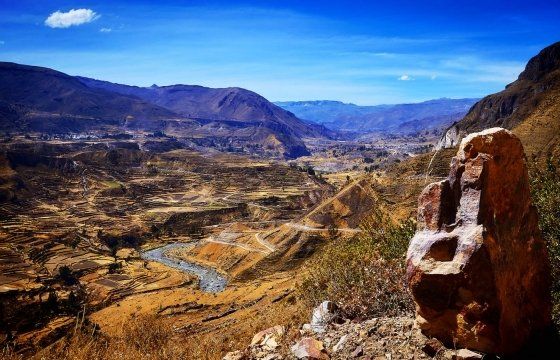
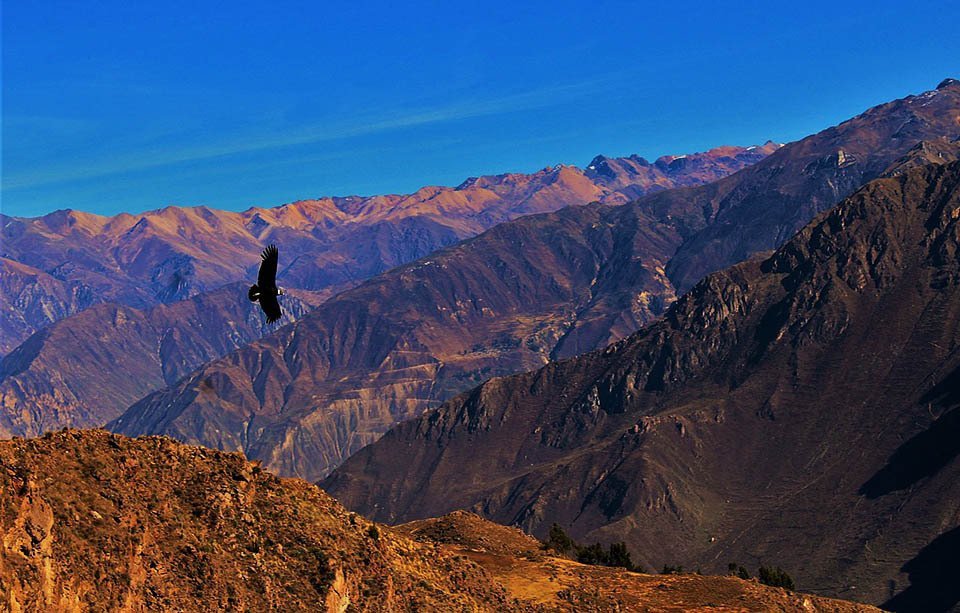
I admit that I was going to the Colca Canyon with a large dose of skepticism. Compared to trekking on the Andean peaks on trails such as Inca Rail (Machu Picchu) or Salkantay Trek, the trip to the bottom of the canyon seems not very thrilling. And yet I was wrong - visiting the Colca Canyon in Peru is not only an opportunity to admire otherworldly views, which in my opinion are even better than the panorama from the top of Machu Picchu, but also a unique opportunity to experience a journey into the deepest canyon in the world.
In this article, I will tell you about the history and curiosities related to the Colca Canyon, I will reveal several tips on the practical aspects of the expedition, and will help you choose the optimal route and form of sightseeing.
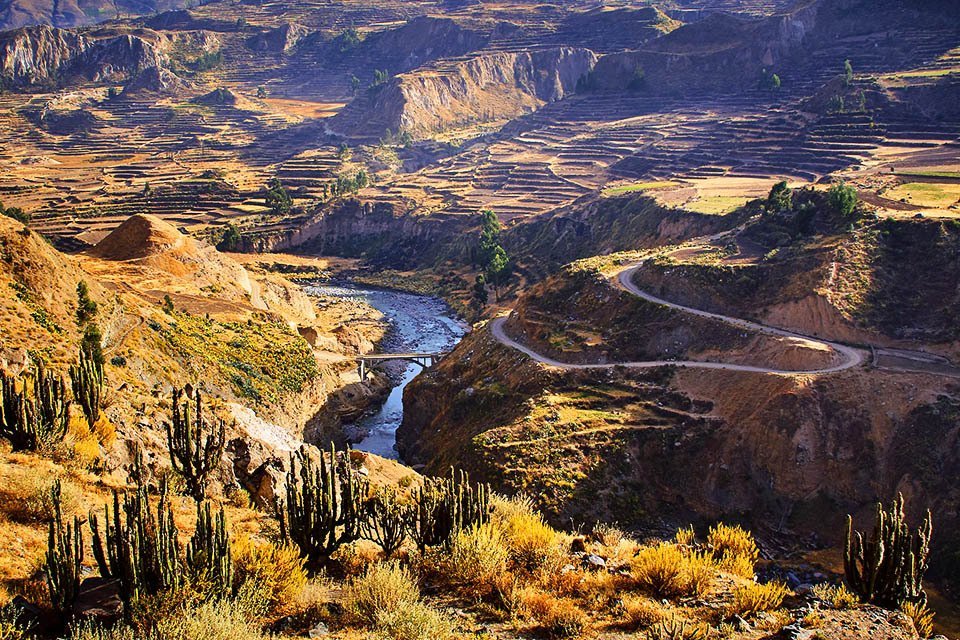
John Paul II Falls, or a short history of the Colca Canyon
Actually, in the first paragraph, according to the licentia poetica, I allowed myself to lie a little, of course only to interest you in this Peruvian miracle of nature. Although there are still information on the internet that Colca is the deepest canyon in the world, it is not even the deepest canyon in Peru! In terms of depth, it is surpassed by the neighboring Cotahuasi gorge, although in fact the deepest canyon in the world (according to geological studies from 2018) is the Chinese Yarlung Tsangpo Canyon.
Such large doubts among scientists are the result of the lack of availability of the above-mentioned geological formations - due to the quite extreme conditions, conducting reliable measurements is quite difficult, so in this particular case you can bend the reality a bit and write about the deepest canyon in the world... And certainly the deepest possible to explore!

Regarding the geological history of the canyon, it was carved by the Rio Colca River, which took about 40 million years. It is now a rather small stream, but was once a rushing river. Interestingly, both the ravine itself and the Rio Colca were actually explored by Poles - in 1981, a group of Polish scientists and sportsmen sailed the entire canyon for the first time on kayaks, shooting a film and discovering new, previously unknown places. Thanks to them, in the canyon area you can find, among others Chocolate Valley or John Paul II Waterfalls. This feat was repeated for the second time only in 2008, which was done by another Polish team.
By the way, a thorough examination of the canyon bottom was also carried out for the first time by a Polish scientist from the Polish Geological Institute, and, as you can see, it seems that expeditions to the Colca Canyon are in Polish people blood!
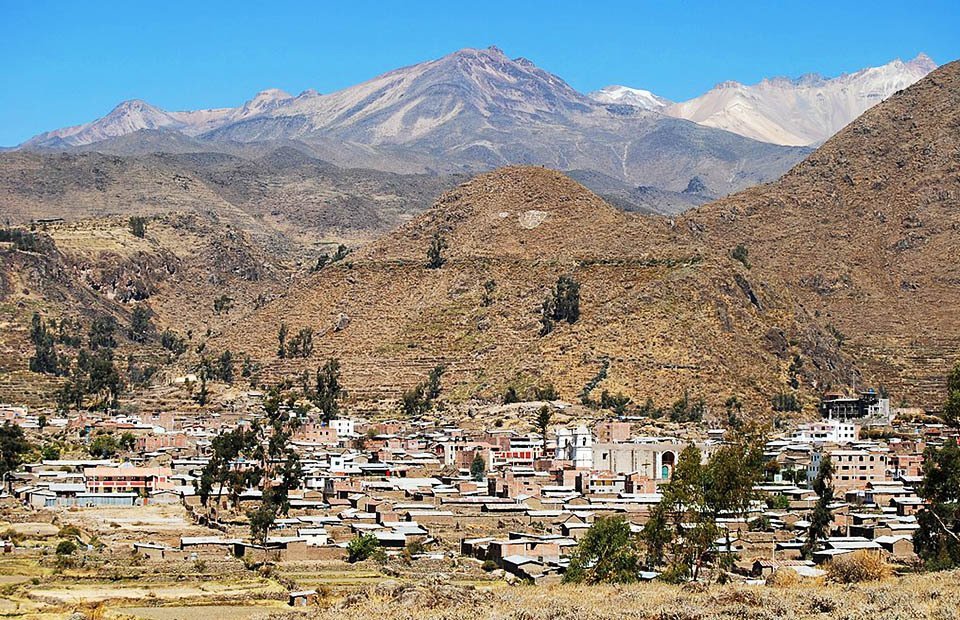
Arequipa and Cabanaconde, or where to start trekking in the Colca Canyon?
Although the entrance to the trail is located in the small town of Cabanaconde, 200 km away, the vast majority of tourists start their trip to the Colca Canyon in the picturesque city of Arequipa. You can find here a dozen (!) companies selling group tours to Colca. Although the canyon is visited annually by about 150 thousand tourists a year, in fact, many of them organize the expedition on their own, and taking advantage of the offers of local travel agencies is, unlike the Inca Trail, optional. Personally, I think that both forms of exploring the gorge are worth attention, so I will try to describe both the self-trekking in the Colca Canyon and the organized tours to the deepest canyon of Peru.
It is worth booking an organized tour already in Arequipa, a day or two before the planned trip. Of course, this can be done earlier, but on the spot it is easier to find out about the available options, and there are almost always free places.
Organized trips differ from each other in the "attitude" to physical effort and length - in the offer of local companies you can find one- or two-day "tours", i.e. regular trips to the bottom of the canyon and back, as well as longer, more demanding trekkings, i.e. several-day (usually 2-3 days, although there are even 5-day ones) trekking including one of several selected routes with an English-speaking guide, accommodation, etc.
The prices of trips and trekking are relatively low and remain in the range of $20-80, which includes accommodation and a meal. You can find sample offers here or here. An organized tour, paradoxically, can be a bit cheaper than an independent trip, mainly due to the extremely high prices in the canyon itself, about which, along with the details of the tour, I will tell you later. Below are some photos from Arequipa in Peru, which is really worth visiting:
How to prepare for a trip to Colca Canyon, Peru?
Regardless of whether you choose a solo escapade or a group trekking, you should prepare yourself properly before going to Cabanaconde. As already mentioned, it is best to do this in Arequipa, a large and beautiful city worth visiting. Before the expedition, first of all, you should acclimatize to the Andes - an attack of altitude sickness during a trip to Colca, both for a short trip and for a longer hiking, may end tragically, especially since Peru does not have any mountain rescue formation, and medical aid is provided by ordinary services and… private mountain rescuers associations, the services of which is very expensive.
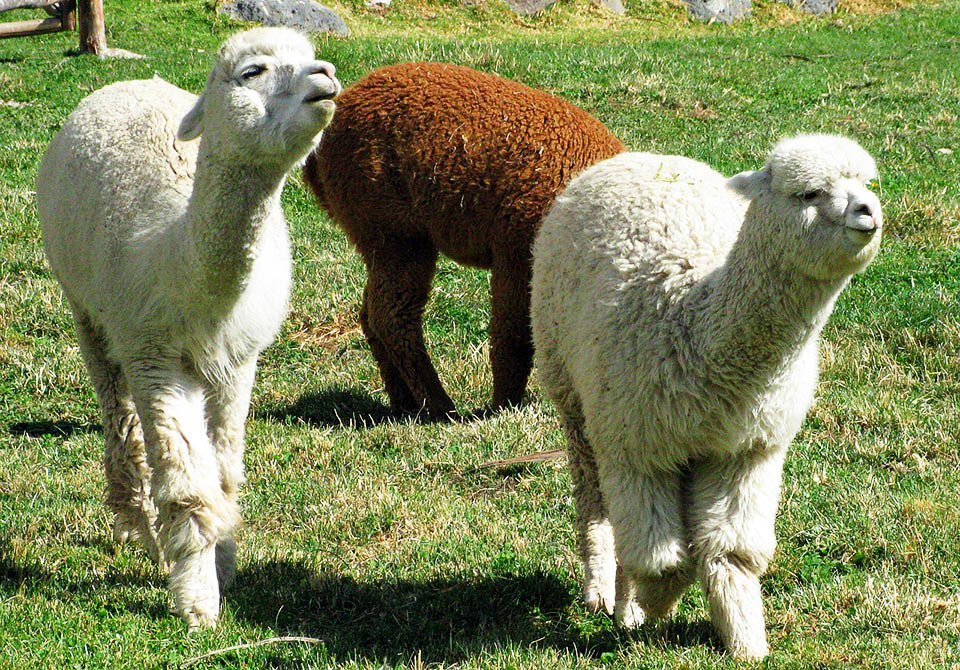
As part of the acclimatization before the trip to the canyon, it is worth visiting Arequipa, and also go on a simpler, local trekking, for example to one of the mountains surrounding the city. For organized excursions to the Colca Canyon, the offices provide their own transport and hotel on site, while when traveling independently, you will need to obtain a bus ticket to Cabanaconda.
Several carriers operate in Arequipa, and buses leave literally every few minutes. You should not believe the timetable available at the station - as the nice gentleman at the ticket office admitted to me, coach drivers literally go as they please. As you can see, the lack of punctuality in bus transport is not only a national feature of, for example, Ireland (when you can wait even an hour for the bus) ...
Cabanaconda is a small village with no more than a thousand permanent residents. Nevertheless, you can find a fairly large shop, several hostels and more "fancy" hotels, as well as several dozen offers of private rooms for rent. The cheapest thing is to stay in a tourist hostel, where you can leave your luggage for trekking included in the price. The cost of a day in cheaper hotels is 20-40 soles, a more expensive hotel costs about 60 sols, while in private accommodation you will pay 40-80 soles per room. If you have valuable electronic equipment with you, I recommend choosing one of the hostels on the main square - you can find there special safes for an additional 5 soles per night.
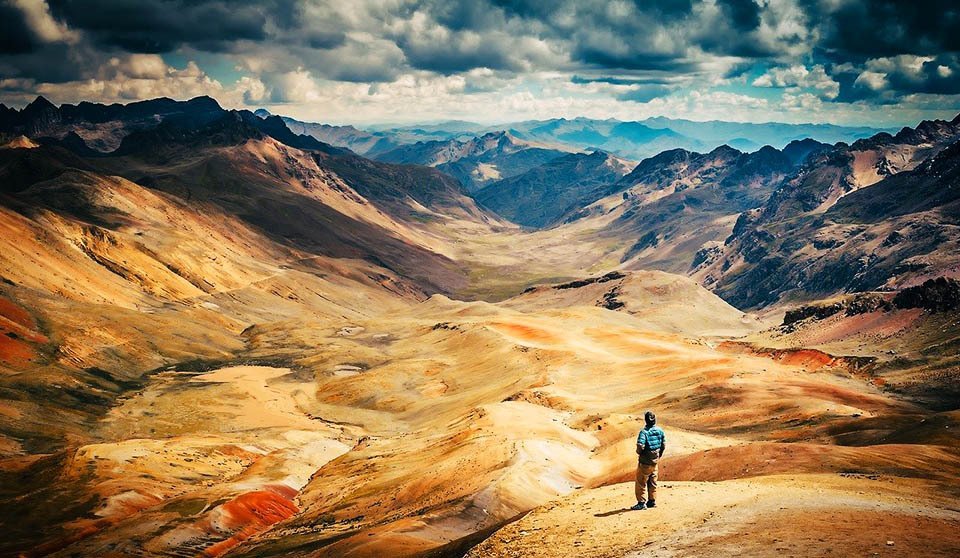
Before the trip, while still in Arequipa, it is worth stocking up on high-energy provisions for trekking (chocolate, etc.), as well as plenty of water. For intensive climbing, it is best to have 4 liters of water prepared per day, although it is worth having even more. As there is an absolute ban on littering in the canyon, and used plastic bottles must then be brought to the top, I recommend buying a special water bottle with a purifying filter in Arequipa - this way you will be able to draw water from Rio Colca and avoid overpaying for water in one of the canyon's lying places where you have to pay about 22-24 soles for a two-liter bottle (almost 6 USD!).
You should also take a hat that protects against the sun (preferably a wide-brimmed hat), sunglasses, comfortable shoes for mountaineering, and warm clothes for the evening - as in the desert, the nights in the canyon are extremely cold and the temperature sometimes it drops to a few Celsius degrees!
It is also an absolute necessity to take a large amount of cash with you.
There are no ATMs in the area, entrance to the canyon is 70 soles, and in several towns located in Colca you can buy the missing food or use the swimming pool or hot springs, of course only for paper or copper money. I also remind you about travel insurance; is a must when visiting Peru, especially when trekking in high mountains.
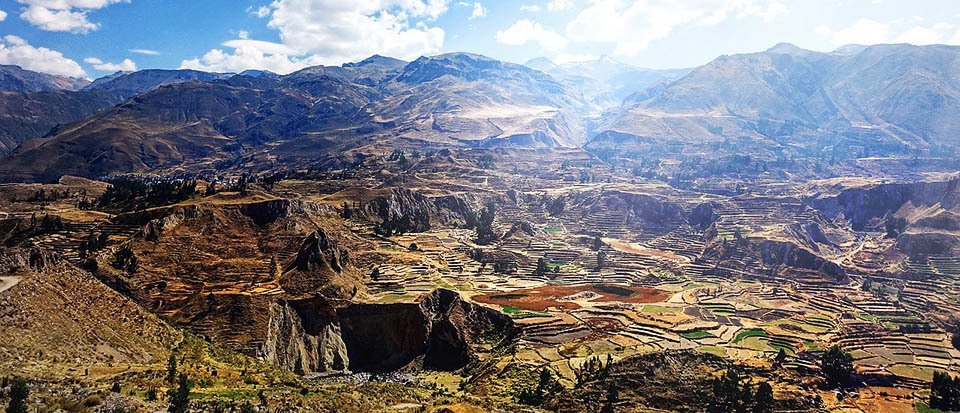
In a few moments I will tell you about a few more interesting points of the Colca canyon and about planning the trip yourself, but at the end I would like to discuss the "difficulties" of the trip. Trekking in the Peruvian mountains necessarily requires a very good condition, and a two-day (or longer) trip through the Colca Canyon is extremely tiring physically due to the murderous approaches, requiring up to 1,500 meters without breaks for descent / flat terrain. There are no technically difficult moments on the trail, but it happens that some tourists simply cannot stand it and either "crash" their muscles or are afraid of returning.
The big problem is the huge heat (even 45 degrees), strong sun and the absolute lack of shade. Adverse weather conditions quickly deplete your strength, and cold nights make it difficult to rest after climbing. It is also worth noting that the most demanding approaches are already at the end of the trip, when returning to Cabanaconde, so. at the moment when the muscles are most tired. If you have doubts as to whether you can make it, carefully consider the decision to go on a trip and do not be afraid to give it up - health is much more important than beautiful views!
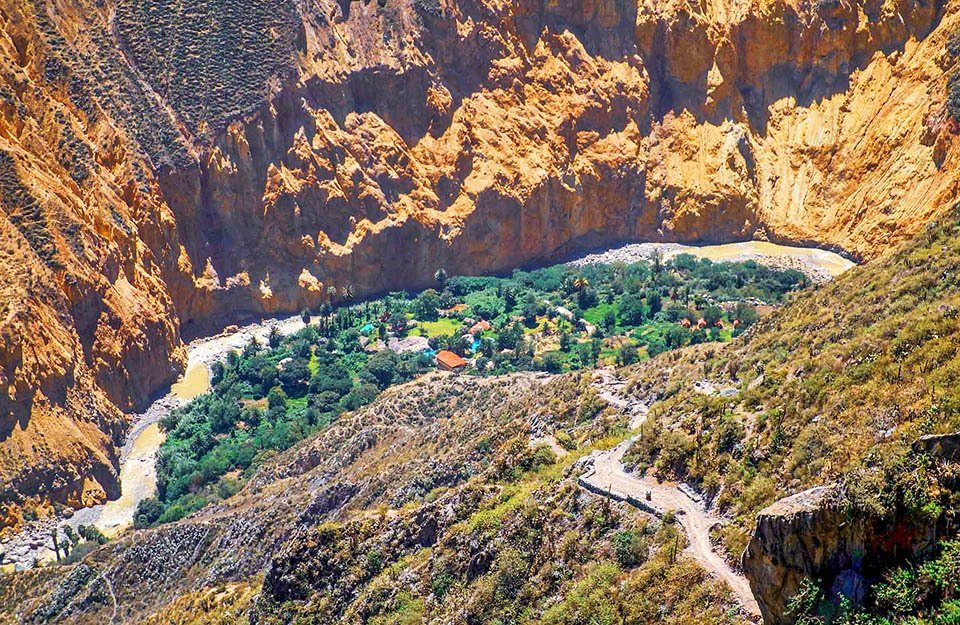
Trekking in the Colca Canyon - tourist attractions and the most popular routes
Within a day or two distance from Cabanaconde, already in the Colca canyon, there are several places worth visiting, where you can find not only beautiful views, but also food and refreshments.
Sangalle, Andes Oasis
The most important of them is the Oasis of the Andes, or Sangalle, which is located deep in the gorge. The village resembles Rivendell from The Lord of the Rings or Gondolines from Silmaliirion… Again I indulged in a bit of licentia poetica, but Sangalle is really beautiful and the pictures of the Oasis are an icon of Colca. However, overnight and food are terribly expensive there (about 70-100 soles per night), I have already mentioned the price of water, dinner is 40-50 sols, and a cold beer is 30 sols ($9!).
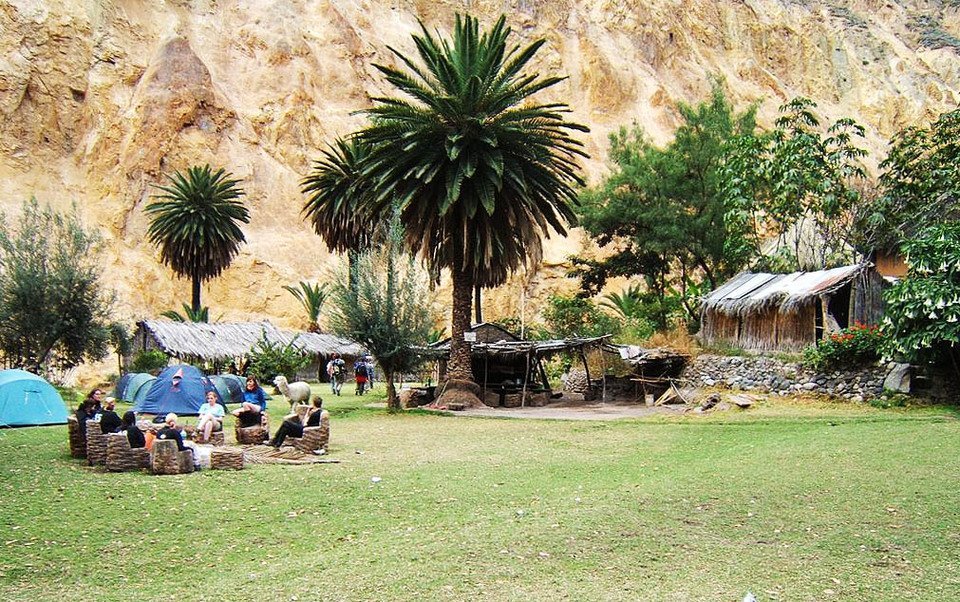
Alternatives: San Juan de Chuccho and Llahuar
For longer hiking routes, an alternative is the much cheaper San Juan de Chuccho, a small town consisting of three hotels, several private houses with rooms for rent and a small snack shop. It does not look very beautiful, and the buildings standing there have little to do with the original construction of the indigenous inhabitants of the canyon, but well, as you can see, money rules the world. In Colca you can also find Llahuar, an equally small and equally profitable town with hotels... and hot springs, which are the perfect way to relax after a tiring climb!
If you feel bad during the trekking and you need a longer rest, there should be no problem with reaching one of the three settlements and an additional one or two days' rest (in 99% you will find there a place to sleep). You can also hire a specially trained donkey or mule on site or in Cabanaconde to help you bring and take out your luggage. Getting rid of 20-30 kilograms from your back is quite a respite, but the animal needs to be taken care of properly, and its rental costs about 200 soles a day.
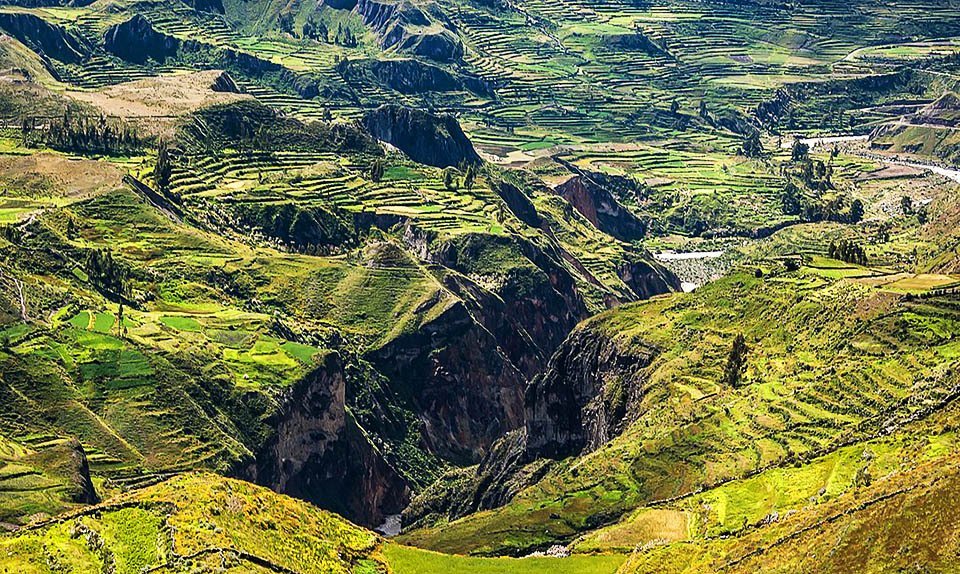
Remains of Inca villages in Colca Canyon
In various parts of the canyon there are also original Inca villages that have survived for years in isolation from civilization. Of course, today it is in vain to look for Inca descendants in folk costumes, and most of the settlements offer the opportunity to stay overnight and learn about local traditions; it is a bit like agritourism farms. The villages are not the only traces of the original inhabitants of the region - in several places on the slopes of the gorge, Inca's agricultural terraces have been preserved, which are no longer used, although still impressive.
Colca Canyon - The most popular trekking routes
When it comes to specific routes and trails, the shortest one is the two-day Cabanaconde - Sangalle (with overnight stay) - Cabanaconde. The first day takes about 5.5 hours of descent, and the return climb takes at least 7.5 hours of intensive ascent. This route is already extremely demanding, although Cabanaconda - San Juan de Chuccho (dinner) - Sangalle (overnight) - Cabanaconde is more popular than it. Importantly, the first day of this longer trip is 12-13 hours of climbing, at which the right pace should be maintained. The alternative is Cabanaconda - Llahuar (overnight) - Sangalle - Cabanaconda. After the first, less demanding day, you can relax in the hot springs, and then go for a more intense walk.
Of course, these routes can be modified at your discretion, and in the event of a weaker physical condition, it is worth dividing the tour into three days and investing in an additional night. However, I warn you that on the third day of trekking in the Colca Canyon, the body will be quite tired, and the tiring approach to Cabanaconde can be troublesome. Nevertheless, the simplest, least demanding route is Cabanaconde - San Juan de Chuccho (overnight) - Sangalle (overnight) - Cabanaconde and I recommend it to all those who have little or moderate experience with trekking in the Andes.
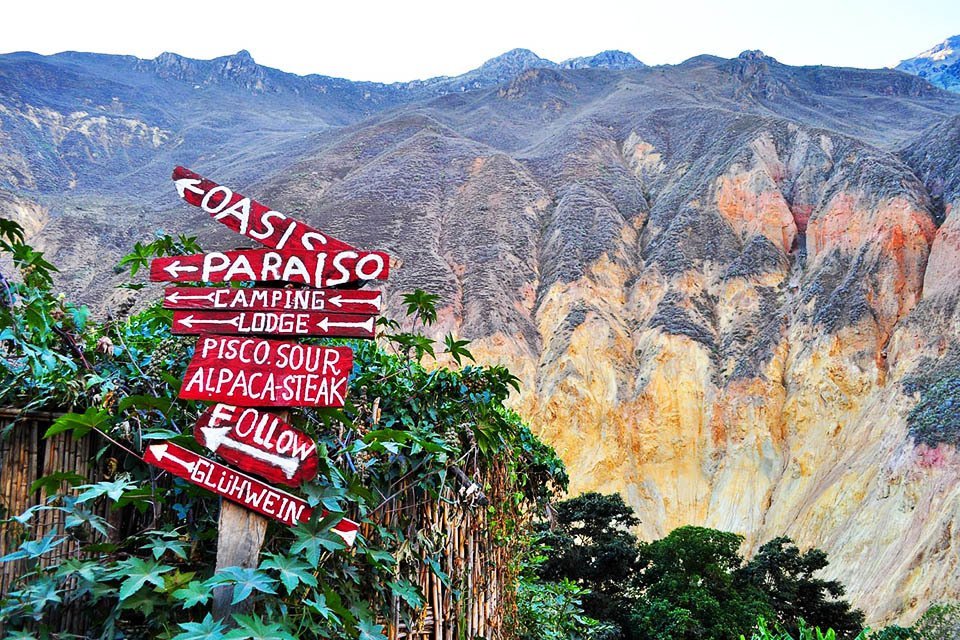
At the end, a little curiosity about the local culture. When trekking in Peru, most Peruvians on the trail call themselves "good morning", or "buenos dias". It is not obligatory, of course, and most foreign tourists do not even do it, but the locals are very happy to be welcomed during their hike. I'm not joking - practically every time I said "buenos dias", a broad smile appeared on the faces of Peruvian tourists as if by magic.
Summary
This is another article describing my trip to Peru. If you are curious about the rest, be sure to click the Peru Travel Blog link. In addition, I hope that you have learned a lot of interesting information and facts about visiting and trekking in this beautiful place, which is the Colca Canyon, and I also introduced you to how to prepare for the trip, what routes and trails you have to choose and where it is worth spending the night. See you soon! These veo pronto!
Read the next article in this series:
Floating Islands, or a guide to the tourist attractions of Lake Titicaca
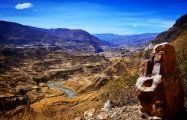

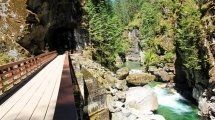
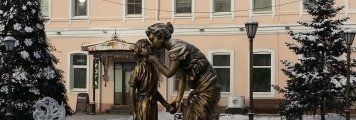

This text was translated automatically. Original text is below: Nasza znajoma jest akurat na długim trekkingu w Peru co tylko zainspirowało nas to uważniejszej obserwacji kraju! Takie kaniony moglibyśmy odkrywać codziennie :)